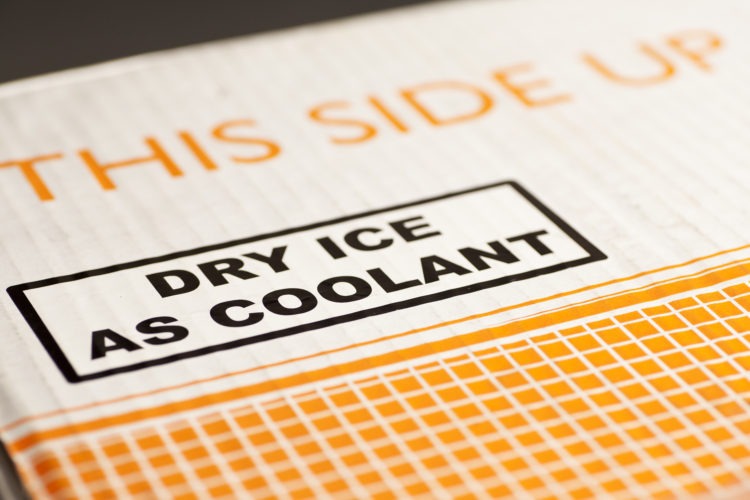
Using dry ice is an easy and inexpensive way to keep perishable items stay fresh during shipping. The biggest advantage of using dry ice in shipping is that it sublimates, or turns directly from a solid to a gas. Therefore, there’s no wet mess when a product is shipped with dry ice and the packaging material and the product itself will not be saturated with liquid and get damaged.
However, there are laws that govern the use of dry ice in shipments because of the potential dangers of the substance if not handled properly. Dangers involved with using dry ice include explosion, suffocation and contact hazards. These risks can be properly managed by simply following basic rules and requirements for shipping items with dry ice.
- Gas Venting – Packages with dry ice must allow for the release of carbon dioxide gas. Never place dry ice in a container with an airtight seal.
- Package integrity – the packaging carrying the shipment and the dry ice must be able to withstand the loading and unloading process and must be closed properly in order to prevent loss of contents that can be caused by vibration and/or changes in temperature, humidity or altitude.
- Packaging Materials – no plastics should be used that could be damaged or weakened by the use of dry ice.
- Proper Labeling – the shipping container must be clearly labeled with a hazard class 9 label, UN 1845 on the vertical side of the container and must display the weight of the dry ice in kilograms.
Dry Ice Shipping Regulations
For air transport, the amount of dry ice per parcel is limited to five pounds or less, but it’s generally unlimited for ground shipments. Shipments containing dry ice must carry a Class 9 DOT miscellaneous hazardous material warning label, and must be clearly marked “Carbon Dioxide Solid, UN1845” or “Dry Ice, UN1845”. With five pounds of dry ice, the package would need to be delivered within 24 hours, as the recommendation for ordinary cooler use is 10 pounds per day. Biological material is often a dry ice shipment, which may have additional special requirements provided by the cold chain industry.
